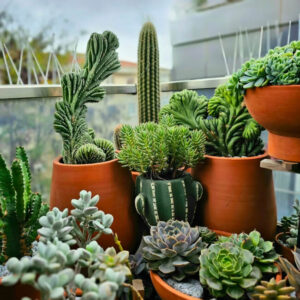No garden is complete without water plants fringing or carpeting a pond. There are plenty of options when it comes to choosing the best water plants for your garden, so we’re going to talk through some of the key terminologies, and help explain what plant will be happiest in what position.
The best water plants you can grow in Australia are natives, and we’ve got some of our favourites in this article, but there are all sorts of unusual oxygenating pond plants from the Americas, Asia, and Europe that will grow happily throughout Australia.
More...
What are Water Plants?
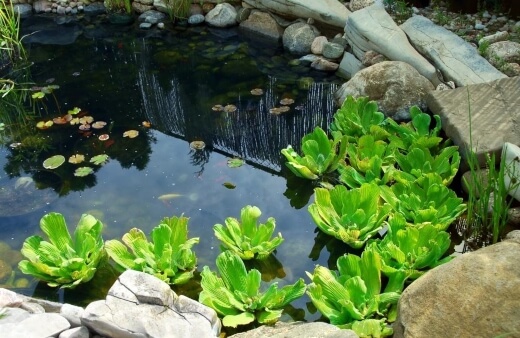
Water plants are plants that grow well when their roots are submerged for most of the year in water. Where the title ‘water plants’ becomes more complicated is when we begin to introduce the idea of tropical houseplants as water plants thanks to their unique ability to grow specially adapted water roots.
If you’ve ever arrived at a garden centre and got confused by horticultural terms on plant labels, then finding pond plants is a whole new challenge. There are seven subgroups of pond and water plants:
- Marginal (or Emergent)
- Submerged
- Oxygenators
- Floaters (or Rafting)
- Carnivorous
- Bog plants
- Tropical
Those groups often intermingle, but fundamentally, they follow these patterns:
- Marginal pond plants are those that like to sit with their roots submerged, but throw their entire top growth out of the water.
They require a shelf to sit on and usually like to be no more than 10cm below the water surface. Most will grow quite happily in bog gardens too. - Submerged pond plants include water lilies, horsetail, and lotus, whose roots are deep under the surface. Submerged plants usually serve as oxygenators too, but not always.
- Oxygenators are the most important plants in your pond, if not your entire garden. Oxygenators help to clean water, filtering out toxins, carbon dioxide, and any nasty left-overs from visiting wildlife.
Most oxygenators are relatively subtle and don’t stand out in a pond, with the most effective usually doing almost all of their work underwater. Despite that, they provide excellent habitats for amphibians and useful hiding places for fish. - Floaters, or rafting plants, are things of exquisite beauty. They literally form rafts, with roots that are entirely detached from the bed of a pond, and developed in nature so that they could follow the flow of rivers to ensure they were never left in shallow or dried up riverbeds.
The most famous example is floating lettuce, which can travel miles, forming vast carpets of foliage in the amazon basin. There are smaller rafting plants you can find for your garden though. - Carnivorous pond plants are truly fascinating. Almost all carnivorous pond plants are bog plants, but some like to be fully submerged.
They take up vast amounts of moisture and help filter pond water by using amphibian or fish faeces as a key nutrient source. This keeps their structures solid, and ready to snap shut.(Check out our list of popular carnivorous plants in Australia for more details.) - Bog plants are the most adaptable water plants for the garden capable of brief droughts but prefer waterlogged soil for most of the year. Most native Australian water plants are bog plants meaning there’s a great selection of wildlife-friendly plants on your doorstep, without needing to look to the tropics.
- Tropical plants are a wide group of plants, and by no means typically water-based, but many tropical house plants will grow happily submerged in well-oxygenated, clean, or filtered water.
Devil's Ivy, Monstera, or even Alocasia will grow quite happily in vases without any soil provided you change the water frequently and feed it to provide nutrients to replicate the soil.
Why Add Water Plants to Your Garden
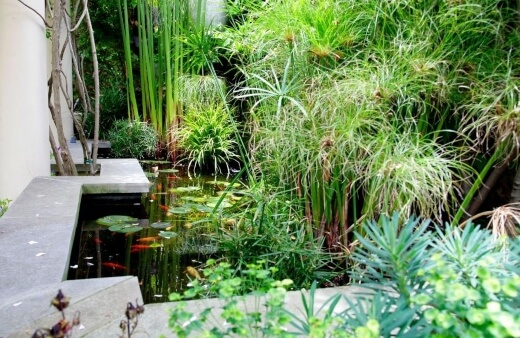
By far the most convincing argument for pond plants and water plants in the garden is the reduced maintenance, but there are plenty of other reasons to buy pond plants:
- Oxygenation
- Wildlife
- Beauty
- Lower maintenance
- Lower costs of running filters
By finding the right mix of water plants, you can help your fish, and improve the oxygen and filtration of your pond water immensely, and you’ll barely even need your filter.
If a pond has 75% coverage from oxygenating rafters, or underwater oxygenators (which you won’t even be able to see) it doesn’t need moving water, or filters.
Why Add Water Plants to Your Home
Tropical plants that grow in water help to humidify, and oxygenate your home, as well as look great and add a talking point to your room. Tropical plants grown in water make beautiful vase displays too, without the need for cut flowers.
How to Grow Water plants
Growing Water Plants Indoors
Start with obvious plants, like Monstera, Devil’s Ivy, or Alocasia, which will grow happily in just water, and build up to more complicated plants and experiment with cuttings from other houseplants.
Plants with aerial roots will typically grow well in just water as they are well adapted to producing roots that can cope with different conditions, and effectively search for water in every possible way.
Keep the water topped up, change it every few days to prevent stagnation, and add a few drops of plant food every week during the growing season to keep your plants happy and healthy.
Best Water Plants to Grow in Australia
1. Parrot’s Feather (Myriophyllum aquaticum)
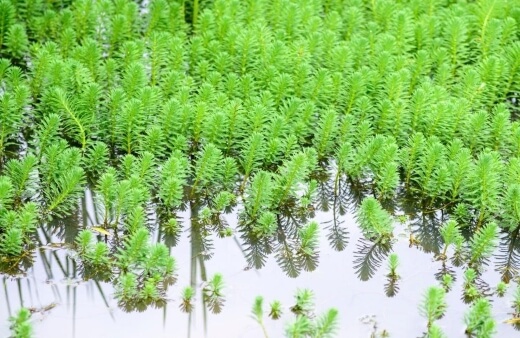
Parrot’s feathers grow underwater and can quickly spread to fill a pond, eventually poking out of the surface. They are very much an invasive pond plant but are easy to prune in summer and autumn when wildlife isn’t using them to hide.
The best thing about invasive pond plants is that once they fill a pond, that’s it – they won’t spread further into the garden, so even if they completely take over, you’ll still be in control.


Get Your Free Guide:
Master Growing Australian Natives eBook
A Must Have Complete Guide for Every Australian Garden
Get Your Free Guide:
Master Growing Australian Natives eBook
A Must Have Complete Guide for Every Australian Garden
2. White Calla Lilies
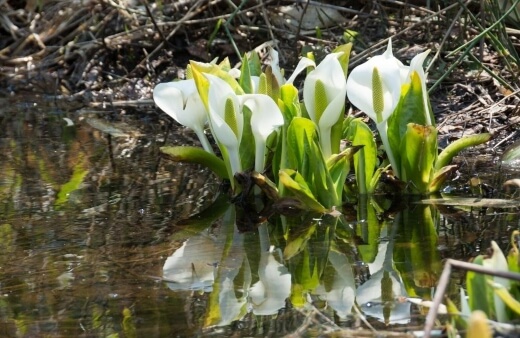
Calla lilies are moisture-loving plants, and are typically happiest in boggy areas around the edges of ponds, but white calla lilies work beautifully as marginal plants, happily submerged down to 10-15cm under the water level.
Thanks to this, they’re now being sold as beautiful single stem houseplants, but they do need to be moved into large vases. If you change a calla lily’s water regularly they will grow in a vase of water for years.
See our in-depth calla lily grow and care guide for more info.
3. Amazon Frogbit (Limnobium laevigatum)
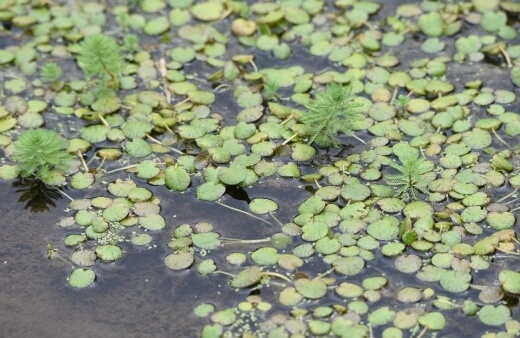
Amazon frogbit is one of my all-time favourite plants. They look like miniature water lilies, with lobed leaves all growing from a shared root, but with one incredible exception – they can detach.
Amazon frogbit grows in carpeting clumps, but each leaf can develop its own root system if detached, eventually forming a separate raft. They are great for small ponds where lilies might take up much space and help create an illusion of space.
4. Hornwort (Ceratophyllum demersum)

Hornwort is one of those ancient prehistoric plants, and you can see exactly how it evolved into other marginal plants like horsetail and crept onto land to form the Asparagaceae family.
The thin leaves are expertly effective at oxygenating water, and most fish will benefit from hornwort as a hiding place too.
5. Rough Horsetail (Equisetum hyemale)
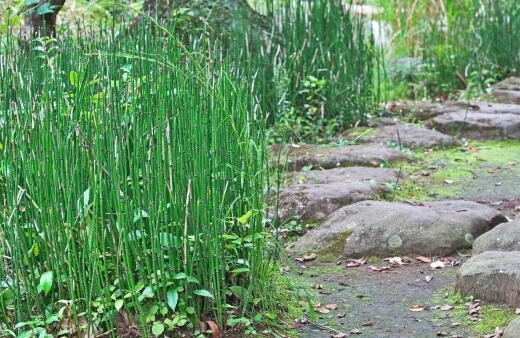
Horsetails are a nightmare for many gardeners, who associate them with the land-loving marestail weed, which is impossible to get rid of and entirely invasive. Thankfully, horsetail is easy to control and loves being contained in pond baskets.
Some varieties can reach up to 1m tall providing perfect architectural forms for formal ponds, while other shorter varieties are just right for dragonfly larvae to emerge in spring.
6. Mosquito Fern (Azolla)
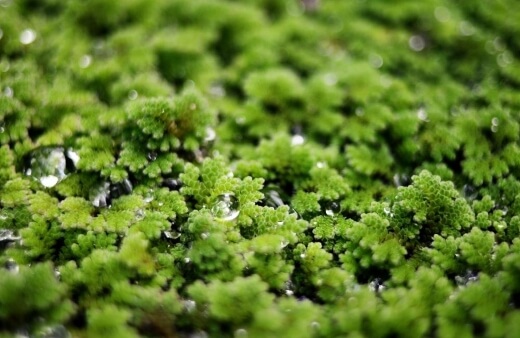
Azolla should only be used in ponds with herbivorous fish, as they are incredibly fast-growing, and can completely block light to the bottom of your pond within 1-2 weeks.
They are a great natural food source for native fish though, and their water repellent leaves are a useful shade while they last.
7. Papyrus (Cyperus papyrus)
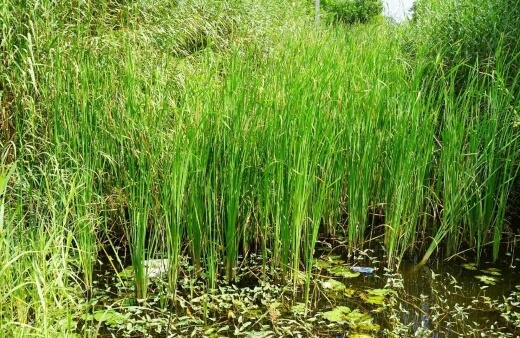
Papyrus isn’t to everyone’s taste but the architectural structure of this quick-growing reed is a beautifully frothy backdrop to flowering marginal plants. Plus, if you’re into crafting, you can make paper from dried stems and leaves really easily.
8. Mosaic Flower (Ludwigia sedoides)
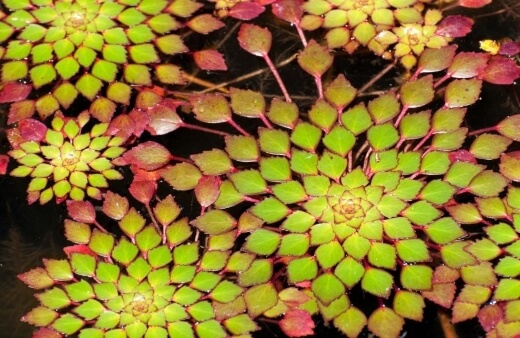
I’ve never fully understood the logic behind the name ‘mosaic flower’ as the flower is a simple yellow, while the leaves provide the iconic mosaic pattern.
These beautiful floating mandalas are easy to grow, and easy to plant but often quite hard to find in garden centres, so keep an eye out when you visit aquatics centres.
9. Flag Iris (Iris pseudacorus)
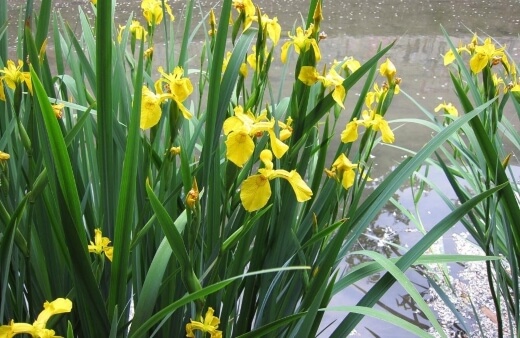
Flag iris are typically marginal plants, and like all iris grow from rhizomatous roots that grow close to the surface. Yellow flag iris will grow out into ponds from the margins, preferring to soak their roots on hot summer days, leading to a beautiful invasion of bobbing yellow petals for a few weeks every summer.
10. Water Hyacinth (Eichhornia crassipes)
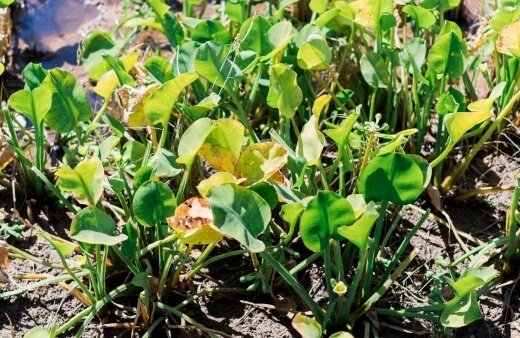
Water hyacinths have a powerful fragrance and are great centrepieces for kitchen tables. They are best grown indoors in controlled spaces as their roots can overtake ponds or outdoor water features if not kept in check.
See our water features beginner’s guide for our reviews, maintenance tips & more.
11. Water Lily (Nymphaea)
Water lilies are often mistaken for lotuses, but their leaves have the iconic lily pad form, which amphibians can often be caught basking on in summer.
Their flowers are gently scented, so if you have a raised pond it’s well worth planting a scented variety so you can reach over for a whiff.
12. Marsh Marigold (Caltha palustris)
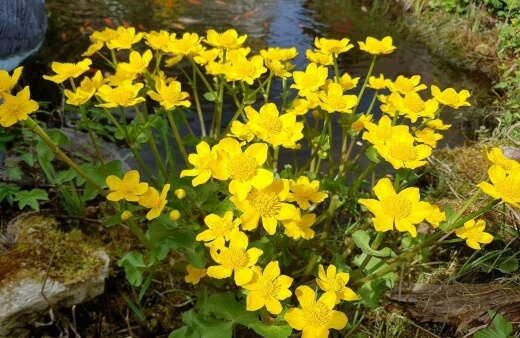
Marsh marigolds are a European native but grow quite happily over here. Like most pond plants they are stuck on whatever continent they evolve on but grow happily wherever they end up.
Their vivid yellow flowers add a zesty pop to the garden in early spring, and with deadheading can keep flowering right into summer.
13. Cattail (Typha)

Cattail is a grass-like perennial water plant, happy on the margins, or submerged up to a foot deep. Their stems can reach up to 6ft tall, so are great for providing privacy as well as a crawling ladder for dragonfly and hoverfly larvae in spring.
14. River Lily (Crinum pedunculatum)
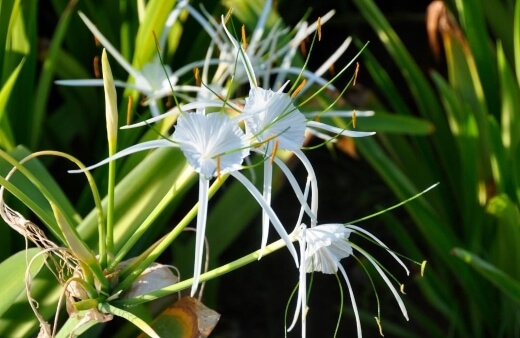
The firework flowers on the river lily are intensely fragrant despite their delicate appearance, growing on tall slender stalks which provide structure in winter and can be cut back in spring for new growth to grow through.
River lilies need warmer climates, so are best grown in Northern Australia, and definitely not Tasmania unless indoors.
Best Native Water Plants in Australia
1. Water Hyssop (Bacopa monnieri)
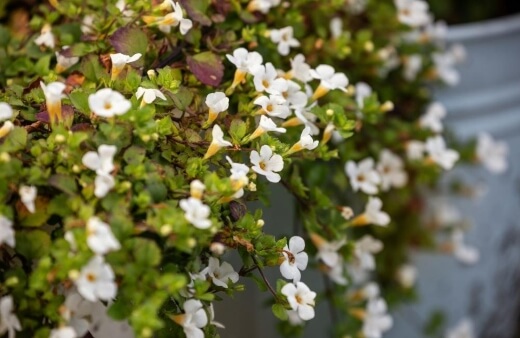
Water hyssops are as close to ground cover as you can get on the water without being invasive. Their gorgeous white flowers spill over the edge of ponds and float out into the water. Perfect for pollinators in late spring and summer.
2. Knobby Club Rush (Ficinia nodosa)
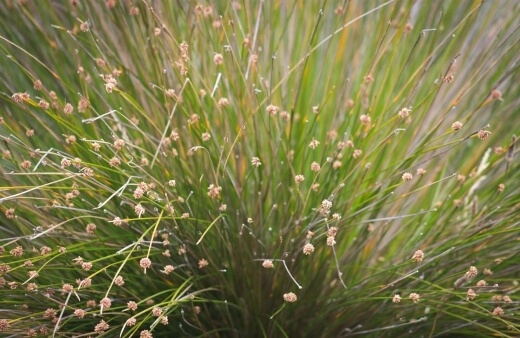
Knobby club rush, like all rushes, provides a perfect habitat for frogs and small insects with clumps of tall leaves topped with puffs of flowers that look like a club, hence the name.
As the flowers dry they provide winter structure, as well as food for garden birds.
3. Cunjevoi (Alocasia brisbanensis)

Alocasia brisbanensis are gorgeous plants, perfect for outdoor ponds if you can keep them contained, or in an indoor or patio water garden, where their roots are restricted and should be pruned once a year to stop them from outgrowing their space.
4. Necklace Fern (Asplenium flabellifolium)

Source: yarraranges.vic.gov.au
Necklace ferns are beautiful marginal or bog plants which thrive on damp soil and can cope with slight submersion. For a wilder look around the edge of your pond, or to hide plastic edging, use ferns to create a more seamless flow at the water’s edge.
5. Australian Native Lotus (Nelumbo nucifera ‘Paleface’)
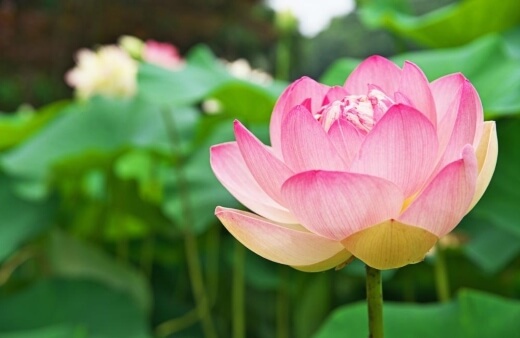
Most lotuses are native to Asia, but nucifera, the Australian native lotus, spread naturally between the continents, with upright leaves surrounding the iconic lotus flowers. These are a must-have for any native garden looking to impress guests.
Water Plants Frequently Asked Questions
Are water plants hard to care for?
Water plants are easy to care for and generally very, very, low maintenance plants. Water plants find their own nutrition, have roots that are adapted to regulate temperature, and they are never at risk of drought or overwatering.
What is the most popular water plant in Australia?
Lotus, particularly the native Australian lotus flowers, are very popular pond plants in Australia, thanks to their ability to add an oriental feel to a garden without having to adapt to the climate too much.
Like the rest of the world though, water lilies will always have the top stop for garden pond keepers.
Where to buy water plants?
The best place to buy water plants is from a local garden centre. There are great online pond plant retailers that sell reliably good plants and know exactly how to pack them, but there’s nothing better than going to the garden centre, and seeing your new plants before you buy them.
Most garden centres with fish or aquatic supplies will have a secret pond plant section hidden around the back.
How to control pond plant pests?
If your pond has enough oxygenating plants, the best way to tackle a pest problem is to add fish. Predatory fish like plecos are great at cleaning water and eat most small mites and insects in the water too.
Are you also looking into growing plants indoors? If you are, then you'd love this list of indoor plants to grow in water.
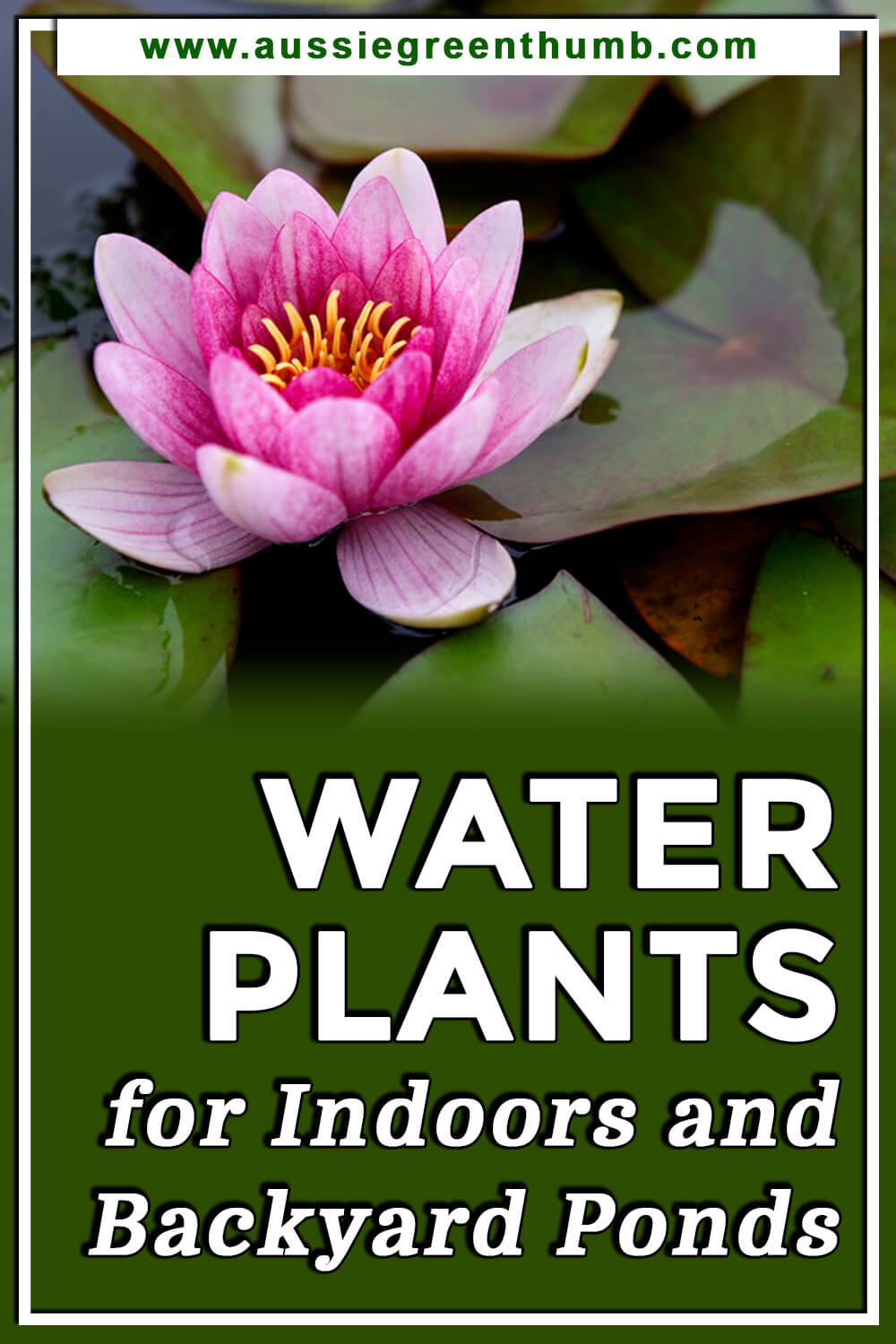
Time to Choose Which Water Plants Best Suits Your Home or Garden
There are water plants for every location and nearly all of them will happily grow indoors if you want an indoor water feature to finish off an open plan kitchen, or lead guests out into the garden.
If you have fish, then water plants are a must, as they are great for their health and happiness, and support water cleanliness too. Most importantly when you find the best water plants for your Australian garden, you’ll have something unique to you.
Published on May 13, 2022 by Maisie Blevins
Last Updated on September 20, 2025

